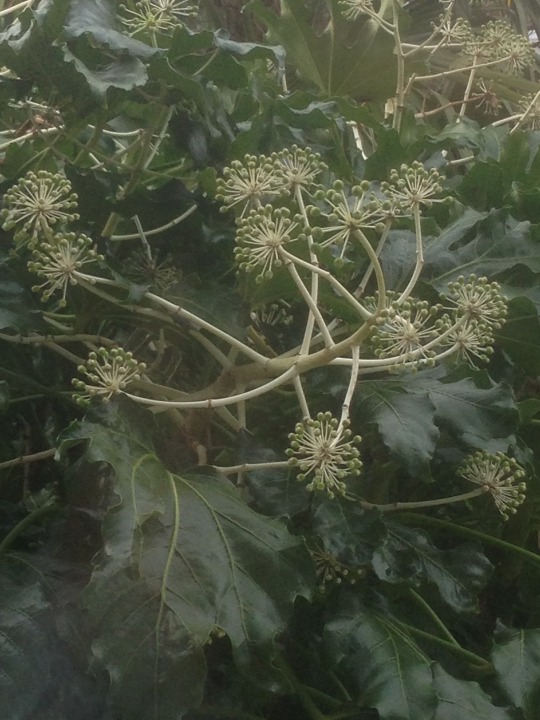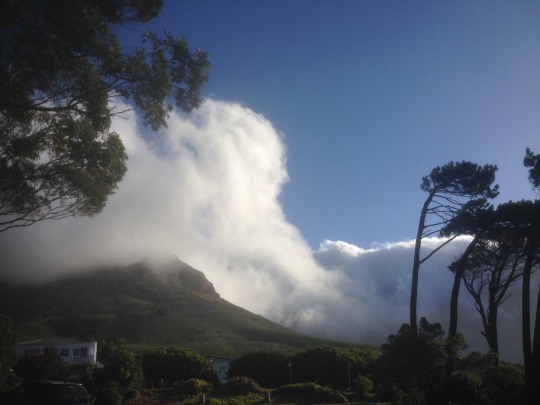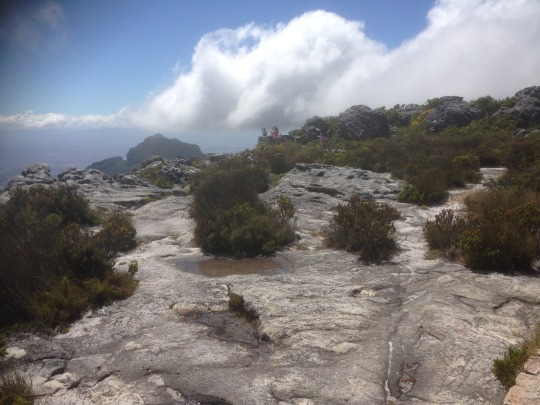Text
shedding the load ..
Two years on, it seems “load shedding” -- or rolling power cuts -- have become a way of life in South Africa. Last year had more hours of load-shedding than the previous six years put together; 3,776 hours, or 10 1/3 hours average per day across the entire year. It also had more hours at ‘higher stages’ (ie. more severe power cuts) than any year since records began.
This year has started off badly too; partway into 20th January, Eskom (the national utility) have already recorded 467 hours, or 19 1/2 days of load shedding -- that is, continuous rolling power cuts day and night since New Year’s Day, with the majority at Stage 4 to 6; this means at least 8 to 12 hours per day without power for most areas. The southern summer season is typically the worst for electricity generation problems, but this year is shaping up for another record-breaker.
In a previous blog, I commented on some of the reasons for power cuts; graft, misappropriation of funds, municipalities with irrecoverable power-supply debts, neglected maintenance, poor-grade and wet coal causing breakdowns, and so on. The chickens of many years have really come home to roost, just as Eskom is trying to play catch-up on some of the regular maintenance work AND kickstart the move to serious investment in renewables.
Mind you, we have a different source of grief in Europe, with gas supplies drastically affected by Russia’s invasion of Ukraine and the West’s response. Since over 60% of the UK’s power has been gas-powered, we have been warned of the possibility of national rolling power cuts for the first time in decades, fulfilling the prediction many of us electrical engineers made over twenty-five years ago of “economic terrorism”.
In response, some of the suppliers have announced a programme of voluntary load-shedding; to credit users for switching off their appliances and so reducing their consumption below average on certain hours of certain days, usually notified about 12 hours in advance. One such “power save session” recently equated to switching off the entire city of Leicester for an hour; not bad for a slight inconvenience.
0 notes
Text
habits ...
After three months back in the UK, I am still catching myself with South African habits: like, saying “Thank you so much” to shop assistants - a particular phrase I never heard before coming to RSA. And even now, it feels odd, even slightly dangerous, to be stepping out of the house and getting in the car with no mask on ...
0 notes
Text
what’s in a name? ..
I was about to blog a “retrospective” on our time in South Africa (Africa Lite) when I was shown a news article about the Eastern Cape. It seems they have decided to rename not only Port Elizabeth and its airport, but most other cities as well, with Xhosa or Koi names -- these people being the present majority and former inhabitants respectively, and both suppressed and disadvantaged by the white settlers, Dutch and English, who created (and named) the cities. Port Elizabeth, for instance, will now be called Gqeberha.
What non-South Africans generally don’t know, however, is that both the Koi language and isiXhosa contain sounds that no European language has ever attempted. These are the ‘clicks’, represented by the letters C, Q and X in the Xhosa tongue; so for instance, immediately after the ‘G’ of Gqeberha, you have to make a deep cluck or ‘plock’ sound with your tongue against your cheek, almost as if imitating a horse’s hoof. (The Koi language, I’m told, has NINE distinct ‘click’ sounds.) Many white South Africans never even attempt the clicks, just using whichever European consonant comes somewhere close; so ‘Xhosa’ sounds like ‘coarser’, instead of starting with a sharp ‘click’ made with the tongue towards the back of the palette. And King William’s Town is to become Qonce; I’m betting a lot of white folk will settle for “Kwonsie” if indeed they bother with the new name at all ...
0 notes
Photo

Our ‘corona-virus’ bush in our garden
0 notes
Photo

Last view of Cape Town ... from airport lounge
0 notes
Text
in transit ..
Having returned to Cape Town (in March) on one of the last flights in, we left CapeTown on 31st December on one of the first (international) flights out that was not purely a repatriation flight. It was only two or three weeks earlier I had noticed an unfamiliar noise overhead -- an aircraft taking off from CPT airport -- the first I had heard in eight months. (It was bright orange, so a Mango regional flight.) The airport, when we got there, seemed almost business-as-usual at first glance; except (of course) everyone was wearing masks; then you noticed the sanitisers, the queueing distance-markers, the distinct thin-ness of the crowds. In the departure lounge, two out of three seats were marked as “do not use”, so we sat on the window-ledge; most of the shops were shuttered, and the duty-free was virtually out of chocolate and had hazard tape all over the alcohol displays. Entering the plane felt reminiscent of entering A&E, with all the cabin staff togged up head to foot in single-use gowns, masks and gloves. Unexpectedly, practically all seats on the first flight were taken; only on the second flight (into Birmingham) was the plane half-empty, with social distancing almost practical. However, with the constant micro-filtering of the air, a plane is possibly the least risky place to be sat next to someone you don’t know for several hours. We had filled in our “tracing” forms, but weren’t required to show the printouts at Immigration; I assume our scanned passport numbers matched up with their records. Angie, however, was stopped and quizzed briefly; at Dubai, she had randomly checked, and been ‘tagged’ as travelling from South Africa -- whereas I hadn’t. Nor were we contacted or followed up after arrival. Still, I learned later they were only checking about 3% of arrivals ...
0 notes
Photo

The famous Red Bus Tour, height of season ...
0 notes
Text
light a candle ..
President Ramaphosa addressed the nation again shortly before New Year. He rebuked us -- softening it a little by saying “we” -- for having not followed the clear rules to prevent an unmanageable rise in Covid-19 infections. Although part of the issue has ben the emergence of a new, more contagious strain of the virus (similar to that discovered in Britain), much the larger cause has been social gatherings, carelessness in hygiene and distancing, and neglecting to wear masks in any public place. In order to contain the spread, he announced that the whole country would revert to a Level 3 lockdown (we had been on Level 1, the lightest); this would enable most of the economy to keep functioning, with a few exceptions. Another raft of districts, including Cape Town, were finally declared ‘hotspots’ and subject to slightly enhanced restrictions. A full lockdown (Level 5) was inappropriate now; it had only been vital at the start, to enable hospitals and testing facilities to get up to full readiness; they were now as ready as they could be. Because of the undeniable link between liquor consumption, careless or violent behaviour and hospital admissions, the sale of alcohol was to be suspended immediately. No gatherings of any sort, other than funerals (limited to 50 attendees -- a serious restriction for most Africans), inside or outside, including religious services, would be allowed until at least mid-January, the next review.
The only miscalculation the Government seem to have made in is the readiness of hospitals to cope with this second wave of the pandemic. Even the same day as the President’s speech, social media posts from doctors and nurses were pleading with people to take all precautions seriously, as there was no more capacity -- beds, or oxygen, or ventilators, or staff -- anywhere in Cape Town or most other places. By 31st December, patients were lying in the car parks; there was no room even in the corridors.
In place of New Year parties, specifically forbidden, the President suggested that to mark the passing of 2020 and coming of 2021 we stayed at home and lit a candle in our window just before midnight; to remember so many lives lost. He planned to do so himself.
We couldn’t join him in lighting a candle; we were in the air on the first leg of our flight home to the UK ...
0 notes
Photo

Seals and cormorants at Cape of Good Hope
0 notes
Text
will the real cape ...
We fitted in one more short road trip before we leave; this time, the Cape Peninsula. If you look on a map with more detail than your average atlas, you’ll see that Cape Town is not quite at the most south-westerly corner of Africa -- there is a whole mountain range heading south off the end of Table Mountain, getting lower as it heads out to sea and ending in ... Cape Point.
So is this the actual Cape of Good Hope? Again, not quite. The peninsula actually ends in three distinct headlands, all within a couple of kilometres of each other. The first one you get to, sailing south from Cape Town (still in the Atlantic at this point) is the CoGH, and the most southerly of the three. Just round the corner is Cape Maclear, and the last one -- with a high peak behind it, and two lighthouses, an old and a new -- is Cape Point, which marks the entrance to False Bay. A lot of people head for the car park just back from Cape Point, ride the funicular or climb to the lighthouse, and tramp the extra 400 yards to the Point itself, and think they have been to the Cape of Good Hope. When we arrived, we found quite a few cars parked at the CoGH (there is a metalled road, signed from the main drag) but far more lining the approach to the Cape Point car park. Too many people were flouting the rule about always wearing masks in public places, and we didn’t park up at the latter place; we just took a photo from inside the car, turned round and left. At Good Hope, we didn’t linger or queue to have our photos taken at the signboard; we only spent minutes out of the car, taking a few photos and keeping clear of everyone else.
Just as interesting, though, in its way, was the drive through the National Park to get there. The roads funnel off the tourists, and the rest of the peninsula is wild, empty, yet full of a hundred different plants; each patch of ground displaying a different green. Here you see a single flame-red flower spike, there a huge bush of the yellow pincushion-flower, across the plain dozens of clumps of a white flower looking like a flock of sheep ... all dotted with boulders and rocks, some water-worn, some pock-marked with little hollows, some jagged and split as if dropped there yesterday. And beyond, the sea; in the distance, huge headlands that seem to have been sliced off by an immense axe. A half-day really isn’t enough to do it all justice.
0 notes
Photo

Table Mountain - enveloped in cloud
0 notes
Quote
Money is power, and what can one accomplish without power? ... For its own sake I do not care for money. I never tried it for its own sake, but it is a power, and I like power.
Cecil Rhodes
4 notes
·
View notes
Text
top table ...
Well, we finally made it. Shortly before Christmas, with a good weather forecast (sunny intervals, low wind), Angie and I, our pastor and his family all drove to the highest hard-top road in Cape Town, bought tickets, and took the cable car to the summit of Table Mountain.
The views were, not surprisingly, stunning. Not just the whole of the City Bowl, but all of Table Bay, Hottentots Holland, the Twelve Apostles, Cape Peninsula and the Atlantic beyond Signal Hill and Camps Bay almost in one panorama. Looking down on the top of Lion’s Head was quite bizarre.
Less expected was what was by our feet. Where I had expected an expanse of nearly-flat, water-worn rock and little else, all kinds of low shrubs and small plants had found a foothold, whether in cracks in the rocks or little puddles of eroded sand. Curious flowers (some of them apparently unique to this mountain top) were dotted all over the place, with pock-marked boulders making architectural statements between them. It could almost have been one of the less conventional “garden design” entries at the Chelsea Flower Show. Made-up paths wind across from viewpoint to viewpoint, branching and diverting. Places with access to the very edge are generally protected by low walls, but nothing else.
We didn’t try any of the longer circular routes, contenting ourselves with a relatively short wander, a careful look over several sheer drops (a couple of thousand feet to the next thing you can see) and a hot drink at the cafe, before riding down again on the cableway. Not the cheapest day out perhaps, but the railway up Snowdon costs more; and even the view from Snowdon doesn’t really compete with the icon of South Africa.
0 notes
Text
the cape doctor ..
Unseasonable weather continues; nearly every day for a week, we have had the “South-easter” blowing, moderately in the morning, increasing to a full gale each afternoon, and often lasting well into the night. Trying to walk even a short distance in it is problematic; the gusts will actually snatch your foot as you take a step and cross it behind your other ankle; spectacles blow off your face -- in fact while holding mine on, my clip-on sunglasses were repeatedly blown off my spectacles ... all while struggling to walk in a straight line, to walk at all upwind, and not to be forced into a run while heading downwind.
Apparently it’s not supposed to be like this in summer. The weather forecast usually predicts “a moderate breeze” for Cape Town; I’ve no idea where they are measuring that.
It may, however, explain why we are so little troubled with mosquitos so far. Any that are bold enough to get airborne will immediately be snatched out into Table Bay at around fifty kilometres an hour.
0 notes
Photo

Prevailing wind
0 notes
Photo

On Table Mountain
0 notes
Text
my fellow south africans ..
President Ramaphosa has addressed the nation twice in the last fortnight about the pandemic and the national response. The first time, with the earliest signs of a much-feared “second wave” being detected, he announced a programme of special action for “hot spots”, where there was a noticeable surge in infections and hospital bed occupation. Mentioning several areas of the Eastern Cape and also the Garden Route (south coast toward Cape Town) as candidates, he declared just one for immediate action -- Nelson Mandela Bay, which includes the Port Elizabeth conurbation -- where we had just returned from!
He listed the chief causes identified; large gatherings, especially parties; inattention to the hygiene rules and responsibilities; and inter-provincial travel. Measures include a slight tightening of Level 1 restrictions, such as limits on the size of public gatherings, parks and beaches closed or having restricted hours, reduced hours for the sale of alcohol, and a ban on “after-tears parties” which take place after funerals (and apparently are one of the worst ‘super-spreader’ events).
The second time, with infections clearly rising nationally, he announced further local restrictions that almost -- but not yet -- included Cape Town (except for national parks and beaches). He explained that a lockdown was not considered appropriate, as hospitals and medical care were now about as ready as could be. Both times he patiently reiterated the essential, and mandatory, hygienic rules: washing or sanitising hands frequently, wearing a facemask over mouth and nose at all times, and keeping at least 1.5 metres apart. Vaccines were still a near-future hope. We had expected tighter limits on gatherings; but the rule remains 100 persons max indoors or 50% of the venue capacity, whichever is less, and 250 outdoors. Ventilation is a must.
In response, our church has been putting in a few extra measures. Already, our auditorium is marked out in 1.5m squares, effectively limiting it to 33% capacity. Masks are insisted upon, and people reminded that they must cover nose as well as mouth. Hands are sanitized at least twice on the way in to the event. Ventilation is running throughout the morning. In addition, coffee and cake, served free after the event, is now “takeaway”, and people are directed to eat, drink and chat outside the building. We are looking at any other improvements we can put in, and still meet in person; by going a bit “above and beyond”, we have so far kept the congregation healthy, and will do whatever we can to keep it that way and show ourselves to be responsible citizens.
0 notes